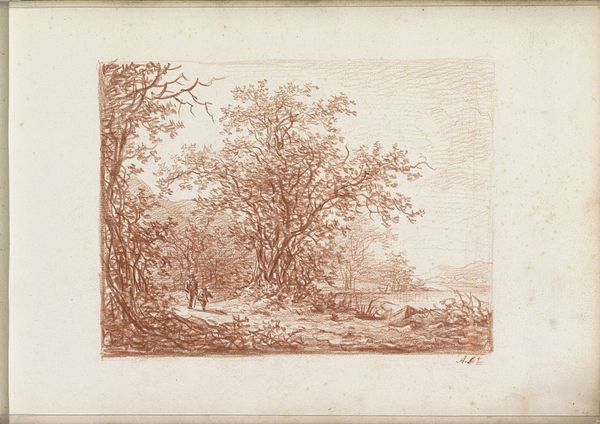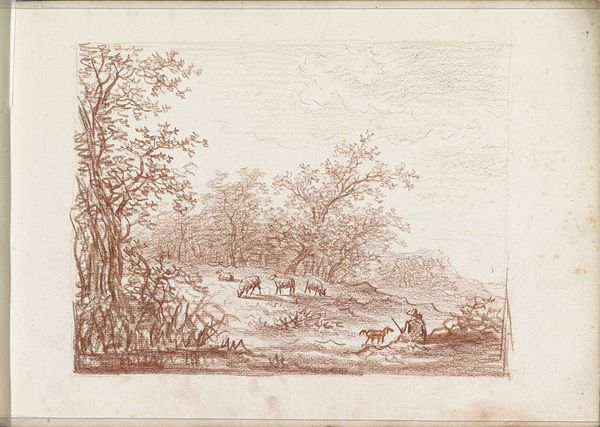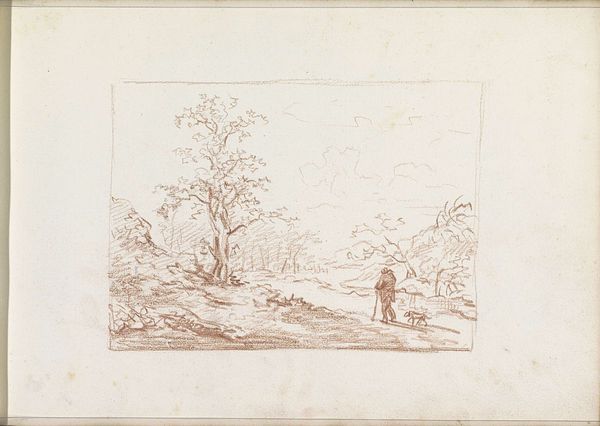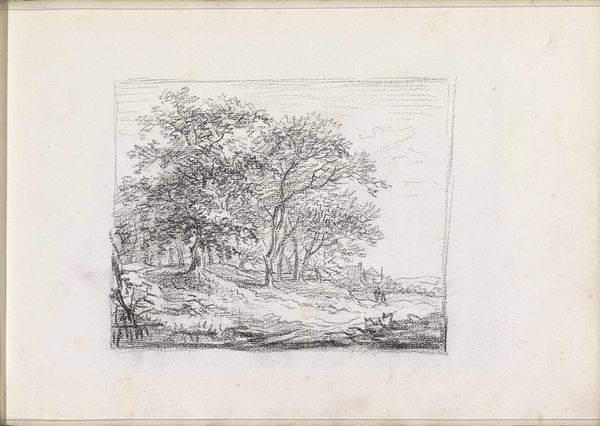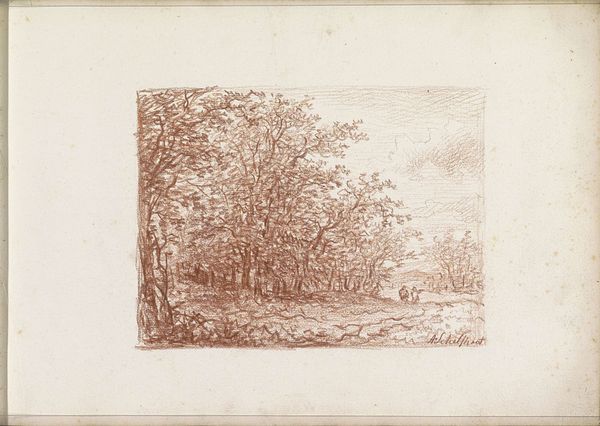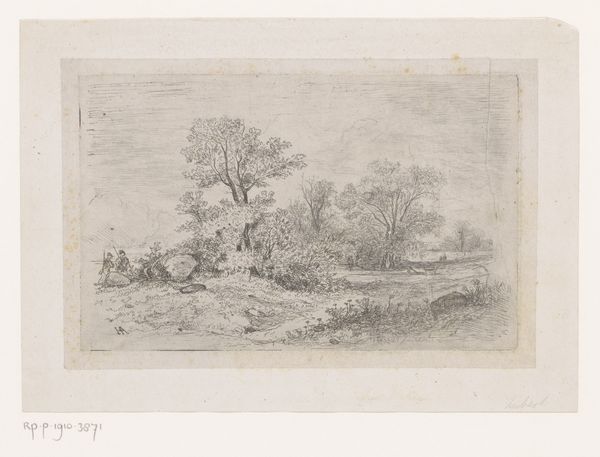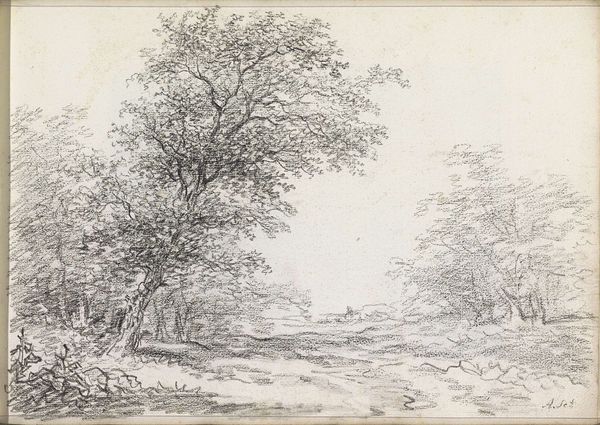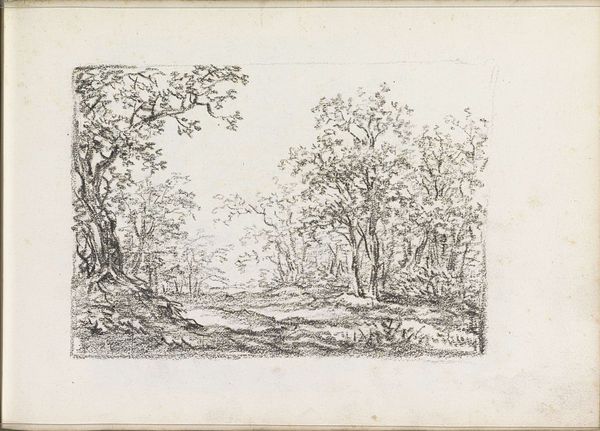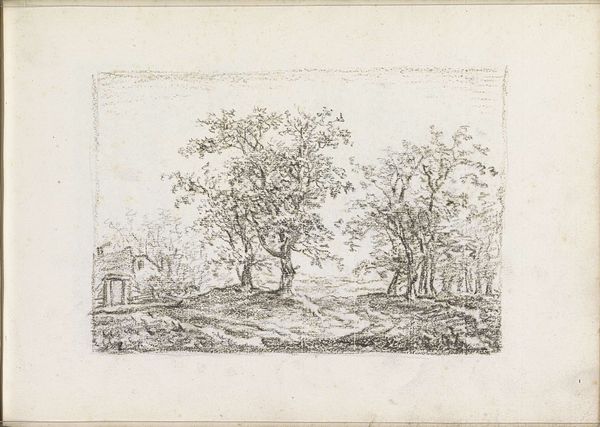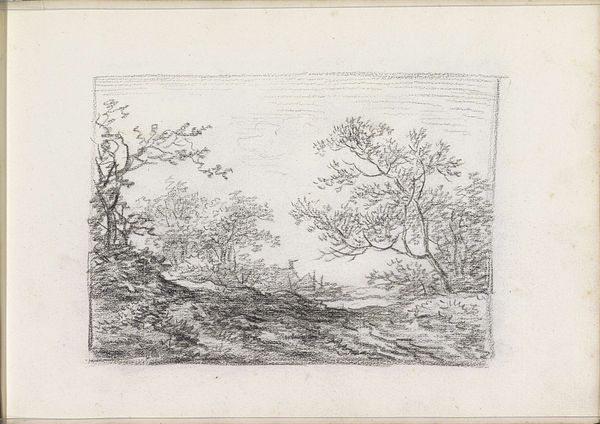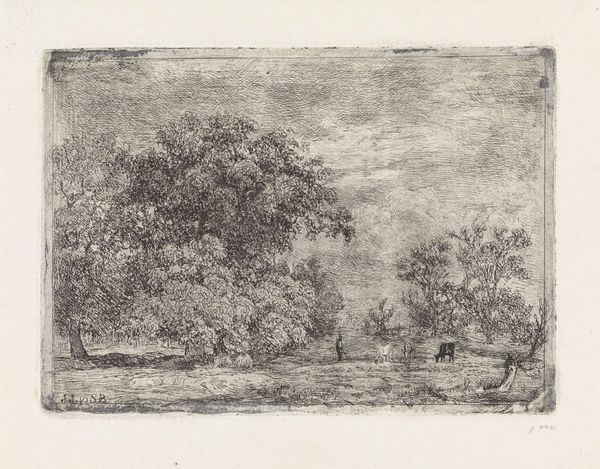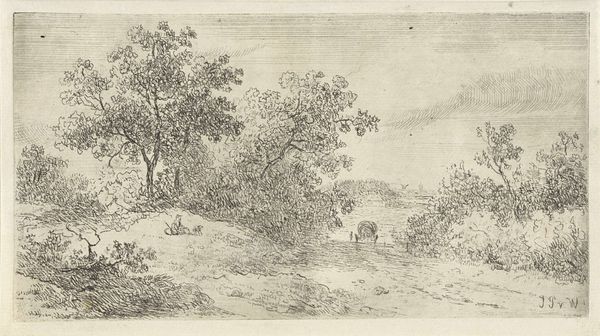
drawing, paper, pencil
#
pencil drawn
#
drawing
#
landscape
#
figuration
#
paper
#
road
#
romanticism
#
pencil
#
pencil work
Copyright: Rijks Museum: Open Domain
Curator: Andreas Schelfhout created this drawing, titled *Landscape with a Man and Boy on a Path*, around 1811. It’s rendered in pencil on paper and held at the Rijksmuseum. Editor: The sepia tones and delicate rendering give it a remarkably calm feeling, like a memory fading at the edges. Curator: The artist’s strategic use of line weight really does direct the eye. Notice how the foreground is rendered with heavier, more defined strokes, which then softens and almost disappears in the distance. Editor: And look at the implied narrative, the intergenerational journey perhaps? Considering the context of the Napoleonic era, one has to ask about the implications of generational inheritance during social upheaval, especially for Dutch citizens? Curator: Fascinating interpretation! Looking solely at the formal composition, the receding road functions as a vanishing point, anchoring the entire composition to a perspectival structure reminiscent of 17th-century Dutch landscapes. Editor: Sure, but this wasn’t simply about adherence to the Golden Age tradition, but a reimagining in a time when the Dutch Republic was no more. Could this simple scene symbolize anxieties around masculinity and homeland in the face of occupation? Curator: It is easy to appreciate the delicate execution of details using only the pencil; particularly the branches silhouetted against the sky, which evoke a sense of atmosphere despite the absence of color. Editor: The landscape feels simultaneously familiar and distant. This rendering presents the figures of the man and boy as dwarfed by their setting. They represent perhaps the everyday experience of navigating landscape changed forever by political will. Curator: It's a masterful handling of light and shade. Schelfhout emphasizes the contrast between the dark woods in the foreground, subtly offset by a diffuse glow. The work, undoubtedly, offers a rigorous aesthetic encounter. Editor: A perspective indeed enriched by its engagement with historical forces! It pushes us to question whose stories are rendered and, more importantly, who remains un-depicted in Schelfhout's idyllic scenery.
Comments
No comments
Be the first to comment and join the conversation on the ultimate creative platform.
